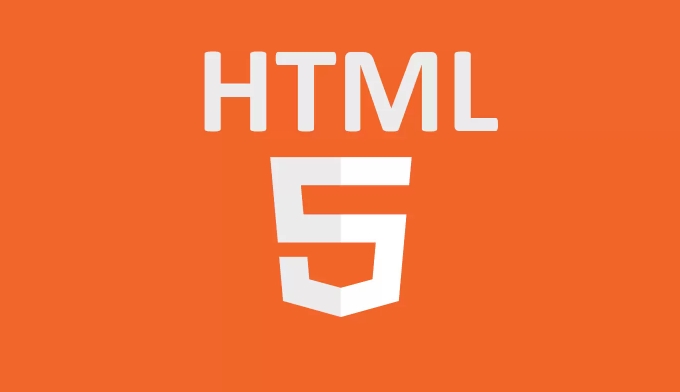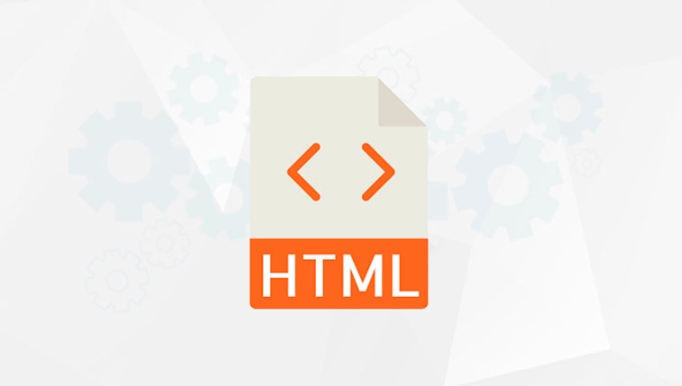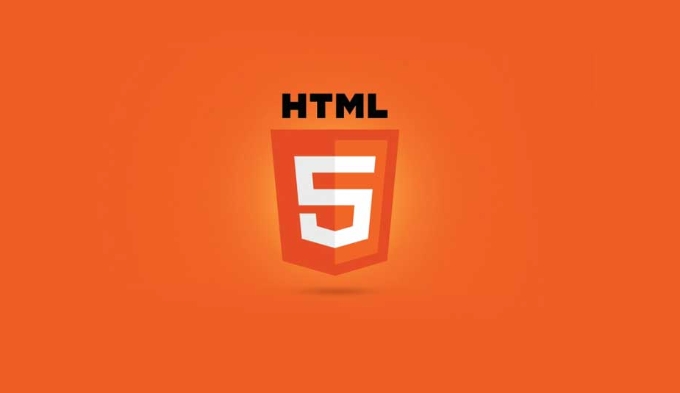 Web Front-end
Web Front-end
 HTML Tutorial
HTML Tutorial
 What are the integrity and crossorigin html attributes used for when loading scripts or styles from a CDN?
What are the integrity and crossorigin html attributes used for when loading scripts or styles from a CDN?
What are the integrity and crossorigin html attributes used for when loading scripts or styles from a CDN?
Jul 01, 2025 am 01:39 AMThe integrity attribute ensures a resource hasn’t been modified by using a cryptographic hash, while crossorigin handles cross-origin requests to enable proper validation. 1. Integrity checks the file’s authenticity via SHA-256, SHA-384, or SHA-512 hashes, blocking malicious or corrupted code if the hash doesn’t match. 2. Crossorigin enables CORS compatibility, typically set to anonymous for CDN scripts and styles. 3. Use both together when loading critical third-party assets to ensure security and reliability, updating hashes when versions change. 4. Gotchas include manual hash maintenance and testing after updates, though automation tools can help.

When you're loading scripts or styles from a CDN, using the integrity and crossorigin attributes helps improve security and reliability. These two attributes work together to ensure that the resource being loaded hasn’t been tampered with and that it’s fetched correctly across domains.

What is the integrity attribute for?
The integrity attribute is used to verify that the resource (like a JavaScript file or CSS stylesheet) delivered by the CDN hasn’t been modified. It uses a cryptographic hash of the file content to make sure what you’re loading matches exactly what you expect.

If the hash doesn't match — say, because someone tampered with the CDN or there was a network error — the browser won’t load the resource. This protects your site from loading malicious or corrupted code.
- Example usage:
<script src="https://cdn.example.net/example.js" integrity="sha384-oqVuAfXRKap7fdgcCY5uykM6 RrvGQRnNpKjzIVQwvLg==" crossorigin="anonymous"></script>
To use this, you need to generate a hash of the file in the correct format (usually SHA-256, SHA-384, or SHA-512). Tools like openssl or online SRI (Subresource Integrity) generators can help with that.

Why do you need the crossorigin attribute?
CDNs are often hosted on different domains, and browsers enforce CORS (Cross-Origin Resource Sharing) policies when fetching resources from them. The crossorigin attribute tells the browser how to handle these cross-origin requests.
Even if you're not making API calls, scripts and stylesheets pulled from a CDN are still subject to CORS rules. Without setting crossorigin, some browsers may not allow the browser to verify the integrity hash properly.
Common values:
-
crossorigin="anonymous"— sends a request without credentials (cookies, etc.), which is usually what you want. -
crossorigin="use-credentials"— includes cookies and other auth info, but rarely needed for public CDNs.
Just remember: if you include an integrity attribute, always add crossorigin="anonymous" unless you have a specific reason not to.
When should you use both together?
You should use integrity and crossorigin together whenever you’re loading critical assets from third-party CDNs — especially for libraries like jQuery, Bootstrap, or React.
This combination gives you:
- Security via content verification (
integrity) - Compatibility with CORS policies (
crossorigin)
It’s especially useful for open-source projects or high-traffic sites where CDN trust is important. However, it’s worth noting that if the CDN changes the file even slightly (e.g., a new version), your hash will stop matching, and the resource won’t load. So keep your hashes updated when versions change.
A few gotchas and tips
- Generating and maintaining hashes manually can be tedious. Some build tools automate this process.
- Always test that your page still works after adding these attributes — especially after updating dependencies.
- If you host the files yourself (not using a CDN), you don’t strictly need these attributes, though they can still provide benefits.
That’s basically it — integrity checks the file's authenticity, and crossorigin makes sure the browser can fetch and validate it properly. Not super complex, but easy to overlook or misconfigure.
The above is the detailed content of What are the integrity and crossorigin html attributes used for when loading scripts or styles from a CDN?. For more information, please follow other related articles on the PHP Chinese website!

Hot AI Tools

Undress AI Tool
Undress images for free

Undresser.AI Undress
AI-powered app for creating realistic nude photos

AI Clothes Remover
Online AI tool for removing clothes from photos.

Clothoff.io
AI clothes remover

Video Face Swap
Swap faces in any video effortlessly with our completely free AI face swap tool!

Hot Article

Hot Tools

Notepad++7.3.1
Easy-to-use and free code editor

SublimeText3 Chinese version
Chinese version, very easy to use

Zend Studio 13.0.1
Powerful PHP integrated development environment

Dreamweaver CS6
Visual web development tools

SublimeText3 Mac version
God-level code editing software (SublimeText3)

Hot Topics
 How do I stay up-to-date with the latest HTML standards and best practices?
Jun 20, 2025 am 08:33 AM
How do I stay up-to-date with the latest HTML standards and best practices?
Jun 20, 2025 am 08:33 AM
The key to keep up with HTML standards and best practices is to do it intentionally rather than follow it blindly. First, follow the summary or update logs of official sources such as WHATWG and W3C, understand new tags (such as) and attributes, and use them as references to solve difficult problems; second, subscribe to trusted web development newsletters and blogs, spend 10-15 minutes a week to browse updates, focus on actual use cases rather than just collecting articles; second, use developer tools and linters such as HTMLHint to optimize the code structure through instant feedback; finally, interact with the developer community, share experiences and learn other people's practical skills, so as to continuously improve HTML skills.
 How do I use the element to represent the main content of a document?
Jun 19, 2025 pm 11:09 PM
How do I use the element to represent the main content of a document?
Jun 19, 2025 pm 11:09 PM
The reason for using tags is to improve the semantic structure and accessibility of web pages, make it easier for screen readers and search engines to understand page content, and allow users to quickly jump to core content. Here are the key points: 1. Each page should contain only one element; 2. It should not include content that is repeated across pages (such as sidebars or footers); 3. It can be used in conjunction with ARIA properties to enhance accessibility. Usually located after and before, it is used to wrap unique page content, such as articles, forms or product details, and should be avoided in, or in; to improve accessibility, aria-labeledby or aria-label can be used to clearly identify parts.
 How do I create a basic HTML document?
Jun 19, 2025 pm 11:01 PM
How do I create a basic HTML document?
Jun 19, 2025 pm 11:01 PM
To create a basic HTML document, you first need to understand its basic structure and write code in a standard format. 1. Use the declaration document type at the beginning; 2. Use the tag to wrap the entire content; 3. Include and two main parts in it, which are used to store metadata such as titles, style sheet links, etc., and include user-visible content such as titles, paragraphs, pictures and links; 4. Save the file in .html format and open the viewing effect in the browser; 5. Then you can gradually add more elements to enrich the page content. Follow these steps to quickly build a basic web page.
 How do I create checkboxes in HTML using the element?
Jun 19, 2025 pm 11:41 PM
How do I create checkboxes in HTML using the element?
Jun 19, 2025 pm 11:41 PM
To create an HTML checkbox, use the type attribute to set the element of the checkbox. 1. The basic structure includes id, name and label tags to ensure that clicking text can switch options; 2. Multiple related check boxes should use the same name but different values, and wrap them with fieldset to improve accessibility; 3. Hide native controls when customizing styles and use CSS to design alternative elements while maintaining the complete functions; 4. Ensure availability, pair labels, support keyboard navigation, and avoid relying on only visual prompts. The above steps can help developers correctly implement checkbox components that have both functional and aesthetics.
 How do I minimize the size of HTML files?
Jun 24, 2025 am 12:53 AM
How do I minimize the size of HTML files?
Jun 24, 2025 am 12:53 AM
To reduce the size of HTML files, you need to clean up redundant code, compress content, and optimize structure. 1. Delete unused tags, comments and extra blanks to reduce volume; 2. Move inline CSS and JavaScript to external files and merge multiple scripts or style blocks; 3. Simplify label syntax without affecting parsing, such as omitting optional closed tags or using short attributes; 4. After cleaning, enable server-side compression technologies such as Gzip or Brotli to further reduce the transmission volume. These steps can significantly improve page loading performance without sacrificing functionality.
 How has HTML evolved over time, and what are the key milestones in its history?
Jun 24, 2025 am 12:54 AM
How has HTML evolved over time, and what are the key milestones in its history?
Jun 24, 2025 am 12:54 AM
HTMLhasevolvedsignificantlysinceitscreationtomeetthegrowingdemandsofwebdevelopersandusers.Initiallyasimplemarkuplanguageforsharingdocuments,ithasundergonemajorupdates,includingHTML2.0,whichintroducedforms;HTML3.x,whichaddedvisualenhancementsandlayout
 How do I use the element to represent the footer of a document or section?
Jun 25, 2025 am 12:57 AM
How do I use the element to represent the footer of a document or section?
Jun 25, 2025 am 12:57 AM
It is a semantic tag used in HTML5 to define the bottom of the page or content block, usually including copyright information, contact information or navigation links; it can be placed at the bottom of the page or nested in, etc. tags as the end of the block; when using it, you should pay attention to avoid repeated abuse and irrelevant content.
 How do I embed video in HTML using the element?
Jun 20, 2025 am 10:09 AM
How do I embed video in HTML using the element?
Jun 20, 2025 am 10:09 AM
To embed videos in HTML, use tags and specify the video source and attributes. 1. Use src attributes or elements to define the video path and format; 2. Add basic attributes such as controls, width, height; 3. To be compatible with different browsers, you can list MP4, WebM, Ogg and other formats; 4. Use controls, autoplay, muted, loop, preload and other attributes to control the playback behavior; 5. Use CSS to realize responsive layout to ensure that it is adapted to different screens. Correct combination of structure and attributes can ensure good display and functional support of the video.





